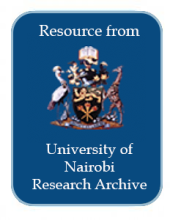/ library resources
Showing items 1 through 9 of 80.Agriculture is directly linked to the socio-economic development of every region. Agriculture impacts us all, whether we are seeking food security, better health or striving to conserve natural resources.
Low adoption of sustainable intensification technologies hinders achievement of their potential impacts on increasing agricultural productivity. Proper targeting of locations to scale-out particular technologies is a key determinant of the rate of adoption.
This study examined the trends, driving factors, and implications of land use/land cover (LULC) dynamics over the past 35 years (1982–2017) in three watersheds of the drought-prone areas that represent different agro-ecologies of Upper Blue Nile basin, Ethiopia: Guder (highland), Aba Gerima (midl
Urban green spaces and their role in the quality of life of residents have been studied across multiple disciplines, based on empirical measurements or qualitative studies – however, the relation, and its strength, between spatial indicators of urban green spaces and visitors’ perceptions of gree
Recent studies assessing agricultural policies, including the EU’s Agri-Environment Scheme, have shown that these have been successful in attaining some environmental goals.
An urgent need to stop degradation is frequently cited as support for climate mitigation efforts involving forests. However, lessons learnt from social science research on degradation narratives are not taken into consideration.
Land as an essential resource is becoming increasingly scarce due to population growth. In the case of the Kenyan coast, population pressure causes land cover changes in the Arabuko Sokoke Forest, which is an important habitat for endangered species.
Preliminary findings on the effects of land use in the Masinga Dam catchment, Kenya, on the storage capacity of the reservoir are presented. Remote sensing and GIS techniques, supplemented with ground reports, were used to determine areas most susceptible to erosion.
The construction of consistent time series of land use presents a key challenge when accounting for elective land use-based activities under the Kyoto Protocol (wetland drainage and rewetting (WDR), cropland management (CM) and grazing land management (GM)), in which current land use-driven green
Pagination
Land Library Search
Through our robust search engine, you can search for any item of the over 73,000 highly curated resources in the Land Library.
If you would like to find an overview of what is possible, feel free to peruse the Search Guide.



